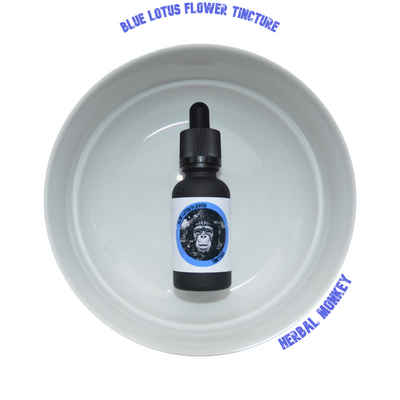
Discover the benefits of Blue Lotus Tincture, a powerful herbal remedy for various health concerns.
Blue Lotus Tincture is a herbal remedy that is derived from the Blue Lotus flower, scientifically known as Nymphaea caerulea. This flower has been used for centuries in traditional medicine for its therapeutic properties.
The tincture is made by extracting the active compounds from the Blue Lotus flower using alcohol or another solvent. This concentrated liquid form allows for easy consumption and absorption of the beneficial compounds.
Blue Lotus Tincture is known for its calming and relaxing effects on the mind and body. It is often used to promote a sense of tranquility and reduce stress and anxiety.
Additionally, Blue Lotus Tincture is believed to have aphrodisiac properties and may enhance sexual experiences. It is also known for its potential analgesic and anti-inflammatory effects.
Overall, Blue Lotus Tincture is a versatile herbal remedy that offers various health benefits and has been used for centuries in traditional medicine.
Blue Lotus Tincture offers a range of potential benefits for overall health and well-being.
One of the main benefits of Blue Lotus Tincture is its ability to promote relaxation and reduce stress and anxiety. It is believed to have a calming effect on the nervous system, helping to alleviate feelings of tension and promote a sense of tranquility.
Additionally, Blue Lotus Tincture may have mood-enhancing properties and can uplift the spirits. It is often used to promote a positive mood and enhance overall well-being.
Another potential benefit of Blue Lotus Tincture is its aphrodisiac properties. It is believed to enhance sexual experiences and increase libido. It may also help to alleviate sexual dysfunction and improve overall sexual health.
Furthermore, Blue Lotus Tincture may have analgesic and anti-inflammatory effects. It is often used to alleviate pain and reduce inflammation in the body.
It is important to note that while Blue Lotus Tincture offers many potential benefits, individual results may vary. It is always recommended to consult with a healthcare professional before starting any new herbal remedy.
Using Blue Lotus Tincture is simple and convenient.
The tincture is typically taken orally, either by placing a few drops under the tongue or mixing it with water or juice and consuming it.
The recommended dosage of Blue Lotus Tincture may vary depending on the individual and the specific product. It is important to follow the instructions provided by the manufacturer or consult with a healthcare professional for guidance.
It is also worth noting that Blue Lotus Tincture may have a slightly bitter taste. If desired, it can be mixed with honey or another sweetener to mask the taste.
As with any herbal remedy, it is important to use Blue Lotus Tincture responsibly and in moderation. If you have any underlying health conditions or are taking any medications, it is always recommended to consult with a healthcare professional before using Blue Lotus Tincture.
While Blue Lotus Tincture is generally considered safe for most people, it may cause some side effects in certain individuals.
Some people may experience mild gastrointestinal discomfort, such as nausea or stomach upset, when taking Blue Lotus Tincture.
In rare cases, an allergic reaction to Blue Lotus Tincture may occur. If you experience any symptoms of an allergic reaction, such as rash, itching, or swelling, discontinue use and seek medical attention.
It is important to note that Blue Lotus Tincture may interact with certain medications, such as sedatives or antidepressants. If you are taking any medications, it is advisable to consult with a healthcare professional before using Blue Lotus Tincture.
As with any herbal remedy, it is always recommended to start with a low dosage and gradually increase as tolerated. If you experience any adverse effects, reduce the dosage or discontinue use.
If you have any concerns or questions about potential side effects, it is best to consult with a healthcare professional.
Blue Lotus Tincture can be purchased from various online retailers and herbal stores.
When buying Blue Lotus Tincture, it is important to choose a reputable supplier to ensure the quality and purity of the product.
Read customer reviews and check for certifications or third-party testing to ensure that the Blue Lotus Tincture you purchase is of high quality.
Additionally, it may be helpful to consult with a healthcare professional or herbalist for recommendations on trusted brands or suppliers.
Remember to always follow the recommended dosage and usage instructions provided by the manufacturer.
In conclusion, Blue Lotus Tincture is a powerful herbal remedy that offers various health benefits. Whether you are looking to promote relaxation, enhance mood, improve sexual health, or alleviate pain, Blue Lotus Tincture may be a natural solution worth considering.
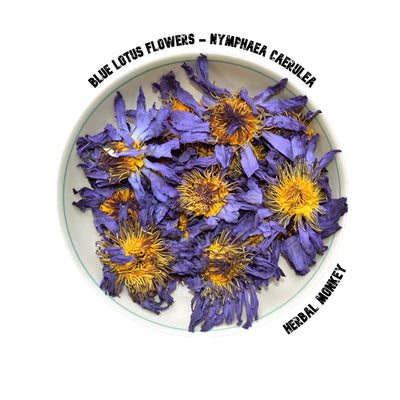
Discover the beauty and symbolism of the Blue Lotus Flower in the UK.
The Blue Lotus Flower holds great significance and symbolism in various cultures around the world. It is often associated with spirituality, purity, and enlightenment. The colour blue represents tranquillity and calmness, while the lotus flower symbolizes beauty, rebirth, and growth.
In ancient Egyptian mythology, the Blue Lotus Flower was considered sacred and was associated with the sun god Ra and the goddess of love, Hathor. It was believed to have healing properties and was used in religious rituals and ceremonies.
In Hinduism and Buddhism, the Blue Lotus Flower is considered a symbol of purity of body, speech, and mind. It is often depicted in art and is believed to represent enlightenment and spiritual awakening.
The Blue Lotus Flower also has medicinal properties and is used in traditional herbal medicine for its calming and relaxing effects. It is known to promote a sense of tranquillity and relieve stress and anxiety.
Overall, the Blue Lotus Flower is a powerful symbol of beauty, spirituality, and growth, and its presence in the UK adds a touch of serenity and elegance to any environment.
Although native to Egypt and other parts of Asia, Blue Lotus Flowers can be successfully cultivated and grown in the UK. The flowers require a warm and sunny climate to thrive, so it is important to create the right conditions for their growth.
Blue Lotus Flowers can be grown in containers or in ponds, as they prefer shallow water. The soil should be rich in nutrients and well-drained. Regular watering is necessary to keep the soil moist, but excessive water should be avoided to prevent root rot.
The flowers bloom during the summer months and require regular fertilization to promote healthy growth. It is important to protect the plants from frost during the winter season.
If you're interested in cultivating Blue Lotus Flowers in the UK, it is recommended to consult with local gardening experts or join online forums to learn more about the specific requirements and best practices.
Blue Lotus Flowers offer various benefits and have been used for different purposes throughout history. Here are some of the notable benefits and uses of Blue Lotus Flowers:
- Relaxation and Stress Relief: The flowers have natural sedative properties and can help promote relaxation and alleviate stress and anxiety.
- Sleep Aid: Blue Lotus Flowers are known for their calming effects and can be used as a natural sleep aid. They can help improve the quality of sleep and promote a sense of tranquillity.
- Mood Enhancement: The flowers have mood-lifting properties and can help improve overall well-being. They are often used to enhance mood and promote a positive mindset.
- Meditation Aid: Blue Lotus Flowers have been used in meditation practices for centuries. They are believed to enhance spiritual experiences and facilitate deep relaxation and concentration.
- Skin Care: Blue Lotus Flowers contain antioxidants and anti-inflammatory compounds that can benefit the skin. They are often used in skincare products to promote a healthy complexion and reduce signs of aging.
These are just a few examples of the many benefits and uses of Blue Lotus Flowers. Their versatility and natural properties make them a popular choice in various wellness and beauty practices.
The Blue Lotus Flower has been a prominent symbol in art and culture for centuries. Its vibrant blue colour and graceful form make it a popular subject for paintings, sculptures, and other artistic expressions.
In ancient Egyptian art, the Blue Lotus Flower was often depicted in hieroglyphics, tomb paintings, and temple carvings. It was associated with the afterlife and was believed to provide protection and guidance to the deceased.
In Hindu and Buddhist art, the Blue Lotus Flower is often depicted as a sacred symbol. It is commonly seen in paintings, statues, and mandalas, representing spiritual enlightenment and transcendence.
The Blue Lotus Flower has also inspired poets, writers, and musicians. Its beauty and symbolism have been praised in numerous works of literature and songs, capturing its essence and significance in human culture.
Today, the Blue Lotus Flower continues to inspire artists and is cherished for its aesthetic appeal and deep spiritual meaning.
If you are interested in experiencing the beauty of Blue Lotus Flowers in the UK, there are several places where you can find them:
- Botanical Gardens: Many botanical gardens across the UK feature dedicated sections for water plants and exotic flowers, including Blue Lotus Flowers. These gardens provide a serene and picturesque environment to admire these enchanting blooms.
- Nurseries and Garden Centres: Some nurseries and garden centres specialize in aquatic plants and offer a variety of water flowers, including Blue Lotus Flowers. You can visit these establishments to purchase Blue Lotus plants for your own garden or pond.
- Online Retailers: There are several online retailers that specialize in selling aquatic plants and flowers. They offer a wide range of options, including Blue Lotus Flowers, and deliver them directly to your doorstep.
When visiting these locations or making online purchases, it is important to ensure that the plants are sourced ethically and sustainably. This helps support responsible cultivation practices and protects the natural habitat of these beautiful flowers.
So, whether you're a nature enthusiast, a gardening enthusiast, or simply someone who appreciates the beauty of flowers, don't miss the opportunity to witness the elegance and charm of Blue Lotus Flowers in the UK.
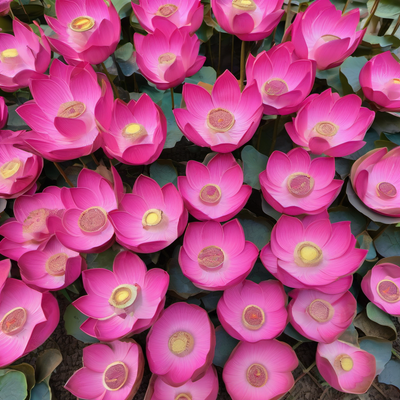
Discover the beauty and symbolism of the pink lotus flower in this captivating blog post.
The lotus flower is a powerful symbol in many cultures and religions. It is often associated with purity, enlightenment, and rebirth. The lotus grows in muddy waters, yet it blooms beautifully and untainted by its surroundings. This represents the ability to rise above adversity and find inner peace and enlightenment.
In Buddhism, the lotus is considered a sacred flower and is often depicted in artwork and sculptures. It symbolizes the journey of the soul from darkness to light, and the path to enlightenment. The lotus also represents the purity of body, speech, and mind.
In Hinduism, the lotus is associated with several deities, including Vishnu, Lakshmi, and Saraswati. It is considered a symbol of divine beauty, purity, and grace. The lotus is often depicted as a seat for gods and goddesses, emphasizing its importance and significance in Hindu culture.
The lotus flower is also a common symbol in Egyptian mythology. It is associated with the sun, creation, and rebirth. The lotus was believed to emerge from the primordial waters of chaos and give birth to the sun god, Ra. It represents the cycle of life, death, and rebirth.
Overall, the lotus flower carries deep symbolism and meaning in various cultures. Its beauty and resilience serve as a reminder to embrace life's challenges and find inner peace and enlightenment.
The pink lotus is a special variation of the lotus flower that holds its own meaning and significance. It is often associated with love, compassion, and beauty. The pink color represents femininity, grace, and tenderness.
In Buddhism, the pink lotus is believed to symbolize the highest level of spiritual attainment. It represents the enlightened mind and the purity of the heart. The pink lotus is often depicted in artwork and statues of enlightened beings, such as the Buddha or Bodhisattvas.
In Hinduism, the pink lotus is associated with the goddess Lakshmi, who is the goddess of wealth, prosperity, and beauty. It is believed that the pink lotus blooms wherever Lakshmi resides, symbolizing her blessings and abundance.
The pink lotus is also seen as a symbol of love and compassion in many cultures. It represents the unconditional love and kindness that one should strive to cultivate in their own lives.
Overall, the pink lotus holds a special place in the hearts of many, representing love, compassion, and spiritual enlightenment.
The cultural significance of the pink lotus varies across different regions and countries. In China, the pink lotus is associated with purity, harmony, and good fortune. It is often depicted in Chinese art and is considered a symbol of elegance and beauty.
In Japan, the pink lotus is known as the 'Sacred Lotus' and is associated with Buddhist teachings and enlightenment. It is often depicted in Japanese art and is considered a symbol of purity and spiritual awakening.
In India, the pink lotus is highly revered and is often associated with various Hindu deities, such as Lakshmi, Saraswati, and Ganesha. It is considered a symbol of divine beauty, grace, and prosperity.
In Egypt, the pink lotus is associated with the sun god, Ra, and is considered a symbol of creation and rebirth. It represents the cycle of life and the eternal nature of the soul.
Overall, the pink lotus holds cultural significance in various regions, representing purity, beauty, and spiritual enlightenment.
The pink lotus flower has been a popular subject in art and literature throughout history. It has been depicted in paintings, sculptures, poems, and stories, symbolizing various themes and ideas.
In Chinese art, the pink lotus is often portrayed in traditional ink paintings and is considered a symbol of purity, elegance, and feminine beauty. It is also a common motif in Chinese poetry, representing love, grace, and spiritual enlightenment.
In Indian art and literature, the pink lotus is often depicted as a divine flower, associated with gods and goddesses. It is a popular subject in Hindu mythology and is considered a symbol of beauty, grace, and purity.
In Buddhist art, the pink lotus is often depicted in paintings and sculptures of enlightened beings, such as the Buddha or Bodhisattvas. It represents the highest level of spiritual attainment and the purity of the heart.
Overall, the pink lotus flower has inspired and captivated artists and writers across different cultures, symbolizing beauty, spirituality, and the pursuit of enlightenment.
If you're interested in growing pink lotus flowers, here are some tips to help you get started:
1. Choose a suitable location: Pink lotus flowers thrive in full sun and prefer to be planted in shallow water, such as a pond or container. Make sure the location receives at least 6 hours of direct sunlight each day.
2. Prepare the soil: Pink lotus flowers prefer muddy or loamy soil. You can create a suitable planting bed by mixing clay, sand, and compost.
3. Plant the tubers: Pink lotus flowers are grown from tubers, which should be planted in the soil with the growing tips facing up. Make sure to cover the tubers with a layer of soil to protect them from birds or pests.
4. Provide adequate water: Pink lotus flowers need plenty of water to thrive. Keep the soil moist, but not waterlogged. You can use a hose or watering can to water the plants regularly.
5. Fertilize regularly: Pink lotus flowers benefit from regular fertilization. Use a slow-release fertilizer designed for aquatic plants, following the instructions on the package.
6. Prune and maintain: Remove any dead or yellowing leaves to promote healthy growth. You can also trim the stems to control the size and shape of the plant.
By following these tips, you can enjoy the beauty of pink lotus flowers in your own garden or water feature.
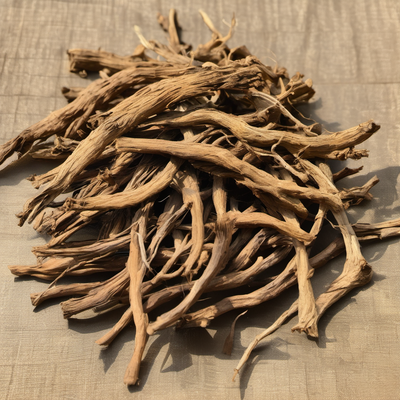
Explore the ancient uses and modern applications of African Dream Root in traditional medicine.
African Dream Root, scientifically known as Silene capensis, is a plant native to South Africa. It has a long history of use in traditional medicine by the Xhosa people.
The Xhosa people, who live in the Eastern Cape region of South Africa, have been using African Dream Root for centuries for its dream-enhancing properties. They believe that the plant has the ability to induce vivid and prophetic dreams, providing guidance and insight.
Traditionally, African Dream Root was prepared by grinding the roots into a powder and mixing it with water to create a milky emulsion. This emulsion was then consumed before bedtime to promote dream experiences.
The use of African Dream Root in traditional medicine has been passed down through generations, with the plant being considered a sacred and powerful tool for spiritual exploration and healing.
In traditional healing practices, African Dream Root is primarily used for its dream-enhancing properties.
The Xhosa people believe that dreams are a gateway to the spirit world and that African Dream Root can help facilitate communication with the ancestors and receive guidance from them.
It is also believed that African Dream Root can reveal hidden truths, provide insight into one's life path, and aid in the resolution of personal and spiritual conflicts.
Additionally, African Dream Root is used for its calming and relaxing effects, helping to relieve anxiety, stress, and insomnia.
The traditional uses of African Dream Root in healing practices highlight its importance in the spiritual and emotional well-being of individuals.
Although African Dream Root has a rich history in traditional medicine, modern scientific research on its efficacy and safety is limited.
However, there is growing interest in exploring the potential therapeutic applications of African Dream Root. Some preliminary studies suggest that the plant may have sedative and anxiolytic effects, which could explain its traditional use in promoting relaxation and sleep.
Further research is needed to better understand the active compounds in African Dream Root and their mechanisms of action. This could potentially lead to the development of new treatments for sleep disorders and anxiety-related conditions.
In addition to its potential therapeutic applications, African Dream Root has also gained attention for its cultural and spiritual significance. It has become a symbol of indigenous knowledge and a focal point for discussions on the preservation of traditional healing practices.
To prepare African Dream Root for use, the dried roots are typically ground into a fine powder.
The powder can be consumed directly or mixed with water to create a milky emulsion, which is the traditional method of administration.
The recommended dosage of African Dream Root varies depending on the individual and their desired effects. It is important to start with a low dose and gradually increase if necessary, as the plant can have potent effects.
It is recommended to take African Dream Root shortly before bedtime to maximize its dream-enhancing properties. It is also advised to create a calm and peaceful sleep environment to enhance the overall dream experience.
As with any herbal remedy, it is important to consult with a healthcare professional before using African Dream Root, especially if you have any underlying medical conditions or are taking medications.
While African Dream Root has a long history of traditional use, its safety profile has not been extensively studied.
As with any herbal supplement, there is a potential for side effects and interactions with other medications. It is important to be cautious when using African Dream Root and to consult with a healthcare professional if you have any concerns.
Pregnant and breastfeeding women should avoid using African Dream Root due to the lack of safety data.
It is also important to source African Dream Root from reputable suppliers to ensure its quality and purity.
Overall, more research is needed to fully understand the safety and potential risks associated with the use of African Dream Root.
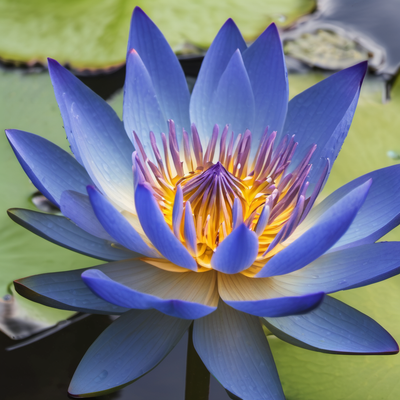
Discover the amazing benefits of incorporating Blue Lotus Flower Tincture into your daily routine.
Blue Lotus Flower Tincture has been used for centuries in ancient Egyptian and Indian cultures.
It is derived from the blue lotus flower, scientifically known as Nymphaea Caerulea.
The flower has a rich history and was highly regarded for its spiritual and medicinal properties.
It was often used in religious ceremonies and as a natural remedy for various ailments.
Today, Blue Lotus Flower Tincture is gaining popularity for its potential health benefits.
Blue Lotus Flower Tincture is believed to have a range of therapeutic properties.
It is known for its calming and relaxing effects, which can help reduce stress and anxiety.
It may also have analgesic properties, making it useful for relieving pain and inflammation.
Additionally, Blue Lotus Flower Tincture has been reported to have aphrodisiac properties and may enhance sexual experiences.
More research is needed to fully understand the therapeutic potential of Blue Lotus Flower Tincture.
Blue Lotus Flower Tincture can be used in various ways.
One common method is to mix a few drops of the tincture with water or juice and consume it orally.
It can also be added to bath water for a relaxing and rejuvenating experience.
Some people use Blue Lotus Flower Tincture topically by applying it directly to the skin.
It is important to follow the instructions on the product label and consult a healthcare professional for personalized guidance.
While Blue Lotus Flower Tincture is generally considered safe for most people, it may cause some side effects.
These can include mild gastrointestinal discomfort, such as nausea or stomach cramps.
In rare cases, allergic reactions may occur, so it is important to monitor for any signs of an allergic response.
As with any supplement or herbal product, it is recommended to start with a low dose and gradually increase as tolerated.
If any adverse reactions occur, it is best to discontinue use and consult a healthcare professional.
When choosing a Blue Lotus Flower Tincture product, it is important to consider the quality and purity of the product.
Look for products that are made from organic blue lotus flowers and do not contain any additives or fillers.
It is also beneficial to choose a product that has been third-party tested for quality and potency.
Reading customer reviews and consulting with a healthcare professional can also help guide your decision.
Remember, each person may respond differently to Blue Lotus Flower Tincture, so it may be helpful to try different products to find the one that works best for you.
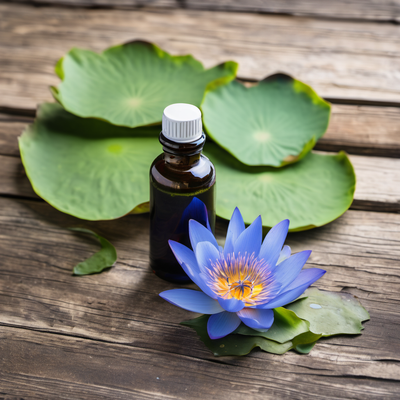
Discover the benefits of Blue Lotus Flower tincture and how it can be used as a herbal remedy.
Blue Lotus Flower, also known as Nymphaea Caerulea, is a water lily that has been used for centuries in traditional herbal medicine.
It is native to Egypt and other parts of East Africa, and its vibrant blue petals make it a popular choice for ornamental gardens.
In addition to its aesthetic appeal, Blue Lotus Flower is also valued for its potential therapeutic properties.
Blue Lotus Flower tincture offers a range of potential benefits for overall well-being and relaxation.
Some of the key benefits of using Blue Lotus Flower tincture include:
- Promoting a sense of calm and reducing anxiety
- Enhancing mood and promoting feelings of happiness
- Supporting healthy sleep patterns
- Providing natural stress relief
These benefits are attributed to the presence of various active compounds in Blue Lotus Flower, such as alkaloids and flavonoids.
Using Blue Lotus Flower tincture is simple and convenient.
Here are some recommended ways to incorporate it into your wellness routine:
- Dilute a few drops of Blue Lotus Flower tincture in a glass of water or juice and consume it orally.
- Add a few drops to your favourite herbal tea for a calming and aromatic experience.
- Apply a diluted solution of Blue Lotus Flower tincture to the skin for a soothing massage.
It's important to follow the recommended dosage instructions provided by the manufacturer and consult with a healthcare professional if you have any underlying medical conditions.
While Blue Lotus Flower tincture is generally considered safe for most people, it's important to be aware of potential side effects.
Some individuals may experience mild gastrointestinal symptoms, such as nausea or stomach discomfort, when using Blue Lotus Flower tincture.
Additionally, it's recommended to avoid using Blue Lotus Flower tincture during pregnancy or while breastfeeding, as its safety in these situations has not been established.
If you experience any adverse reactions or have concerns about using Blue Lotus Flower tincture, it's best to discontinue use and consult with a healthcare professional.
Blue Lotus Flower tincture can be purchased from various online retailers and health stores that specialize in herbal remedies.
When purchasing Blue Lotus Flower tincture, it's important to choose a reputable supplier that offers high-quality products.
Read customer reviews, check for certifications, and ensure that the product is free from any additives or contaminants.
Some popular brands that offer Blue Lotus Flower tincture include XYZ Herbals, ABC Naturals, and Herbal Bliss.
Remember to follow the recommended dosage instructions provided by the manufacturer for optimal results.